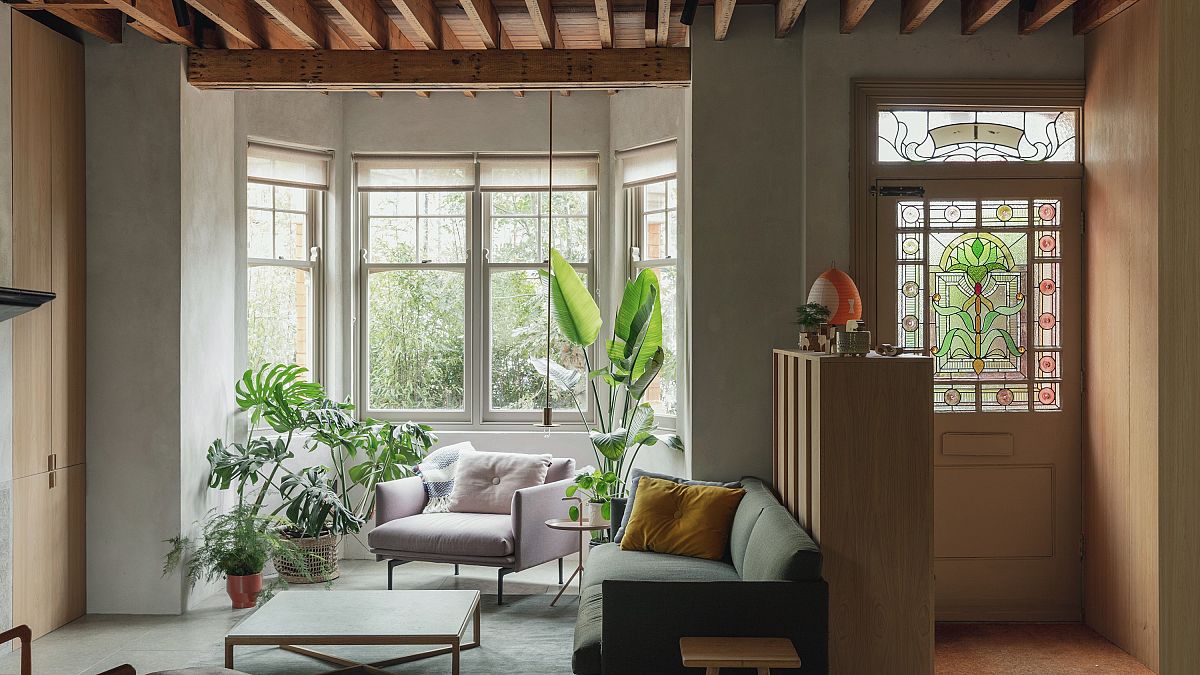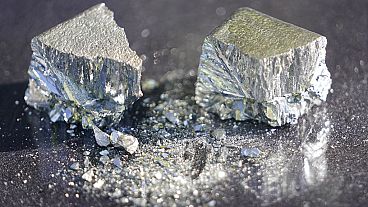With expert advice and calculations, these are the best ways to make yourself an eco home, no matter the budget.
For a long time many of us have been looking at ways to reduce our environmental impact and live more sustainably. With the current energy crisis causing household bills to rocket, this has become even more of an imperative for most people.
So whether you want to be kind to your planet or kind to your wallet, we spoke to some experts about how to eco-fy your home and reduce your bills.
Transform your home
Not everyone has the means, or land, to build an eco home from scratch. Depending on your budget and motivation (environmental or financial) there are a number of things you can do to your home to make it more efficient.
According to Ben Ridley, Director of Architecture for London, for those with a small budget, the first thing you should do is draft-proof all doors, windows and letter boxes. After that, he recommends loft insulation.
“If a slightly bigger budget is available the next steps would be replacing windows, insulating under the floor and insulating external walls,” he adds.
When it comes to insulation it’s worth considering what material to choose. Some of the standard options, though they do a very good job of insulating, are not great for the environment as some are plastic based or their production produces a lot of CO2. Some also can reduce the air quality inside your home.
Whilst there are many more environmentally-friendly insulation options such as stone mineral wool insulation, hemp, straw bales and fibreglass, each of them has their strengths and weaknesses. It’s worth considering your geographical location and the local temperature, the amount of space you have for insulation, and how well sealed your house is before choosing which options you’re going to choose.
Architecture for London recently transformed a standard Edwardian terrace house in North London into an eco home. With a budget of £250,000 (€295,600), the house was given a rear extension, loft conversion and a complete refurbishment inside.
And it’s certainly a reminder that ‘eco’ does not mean ugly.
In the construction process, the team considered the embodied energy of the materials. Embodied energy is the amount of energy required to produce the material.
They opted for a timber suspended floor and frames to avoid the need for steel and concrete slab which have a high embodied energy.
To combat this further they also opted for natural finishes throughout the house, using stone, timber and lime plaster rather than cement based products.
Lime plaster was used throughout the house which provides an airtight layer, helping the house to retain heat.
They also installed MVHR (Mechanical Ventilation with Heat Recovery) which filters air coming into the house of pollen, diesel particulates and NOx (something very useful in big cities like London). It also uses the heat already in your home to warm the air to make your house warm, cosy and very importantly, not damp.
The house was completely reinsulated. It was done externally at the side and rear, and internally at the front with wood fibre as this allowed the house to keep its original Edwardian façade and charm.
Though the overall living space in the house increased, they estimate that there was an approximate 80 per cent reduction in the need to heat the space.
Cost Vs Benefit
Research published by theecoexperts.co.uk calculates the average cost of installing various eco upgrades to a 3 bed house vs the annual saving and the amount of time it takes to recoup the initial cost.
A smart thermostat will set you back around £180 (€215), though it may cost you more if you choose to have someone install it for you. It will likely need replacing every 10 years but with an average yearly saving of £154 (€184), it pays for itself in less than two years.
Roof insulation is around £300 (€358) and will last about 40 years. It’ll reduce your energy bills by around £165 (€197) per year and so will take just less than two years for you to start saving.
Cavity wall insulation on average costs £475 (€567) and will save you on average £185 (€220) per year, meaning it takes 2.5 years for you to have recouped your costs. Over a 20-year period, this will also reduce your carbon emissions by just over 13 tonnes.
Solar panels are where the investment starts to get a little bigger. It costs just under £6,000 (€7200) to install solar panels to your average 3 bedroom house. Though it will save you around £330 (€394) per year on your bills, it does mean it will take just under 12 years for you to break even and start saving money.
However, although the current energy bill price rise is not welcome, it is coming with a rise in the money you can make selling any of your excess solar power back to the national grid. There’s a few things you’ll have to do to get set up for smart export guarantee (SEG) but it’s a nice option if you are planning on adding solar panels to your home.
Other things like double glazing, an air source heat pump and a storage battery for your solar panels are a heavy investment which, if you replace as regularly as recommended, you’re unlikely to ever earn back your money.
But if you’ve got the money and your aim is to reduce your emissions, an air source heat pump is a great feature to install. Over a 20-year period, it’s estimated you’ll save a whopping 50 tonnes of carbon emissions.
Build your own eco home
If you’re dreaming big, you could start from scratch and build your own eco home. But where to start?
We spoke to Alex Johnen who is in the process of building an eco home in Devon to see exactly what it’s like.
One of the biggest difficulties they have had so far is finding a mortgage broker. They’ve only found one lender, The Ecology Building Society, who are willing to give them a mortgage on a self-build, non-traditional home.
And the interest rate is 4 per cent, whereas most mortgages in the UK are somewhere between 2-3.5 per cent.
“Most self-builders switch to a different mortgage once they’ve completed the build but we are anticipating that we may not be able to do this because even once built, we still might not find anyone to lend on a ‘non-standard’ construction,” says Alex.
“The problem is that this issue would put off a lot of people who don’t have lots of cash in the bank from doing a build like this.”
Planning an eco build
Alex and her partner are planning to build a 2/3 bedroom, one-storey home with a curved roof.
“We are using as much natural building material as possible for this, so using timber frame and hemp-crete for the main structure, then a corrugated metal curved roof over the top,” Alex explains to Euronews Green.
All the windows on the property will be triple glazed but added to that, they’ve planned the position of the windows very precisely to help optimise the sun’s power to heat the house.
Like the house conversion by Architecture for London, Alex is opting for low embodied materials in her build. The materials she’s chosen, such as timber, hemp, lime and clay, also sequester carbon which helps to fight climate change.
She’s also considered the toxicity of the materials - as they’re aiming for the house to be very airtight to reduce its energy usage, they need to ensure it’s a healthy space to live in.
There’s a few things they’d love to include in their design but have had to compromise on due to budget.
They were quoted £50,000 (€59,645) for a ground source heat pump so that’s gone from the plan. But as their overall design should ensure the house is very well insulated, they’re hoping it shouldn’t need much heating and have opted for a couple of electric radiators.
Furthermore, with solar panels having a large initial cost, they haven’t been completely abandoned but instead, Alex and her partner have decided they’re not the first priority and can be added to the house in the future when they have a bit more cash.
Although Alex is working to a budget, she hasn’t chosen the cheapest possible options for all aspects of her home.
“It is possible to be much more low key and create very eco houses using straw bales and lime/clay,” Alex explains.
“These are easy to build (especially if your house is not a curve!) and material is cheap BUT it is hard to find builders who are familiar with these building techniques and materials.”
The Future Living Home
At the current Ideal Home Show, taking place at Olympia London until March 27, there is the ‘Future Living Home’ on display.
This modular, self-build home took just four days to construct, unlike traditionally built houses which take an average of 22 weeks.
It’s made from 70 per cent recycled steel and is filled with a range of eco-gadgets you’re likely to see become more popular around the home.
Through a combination of reducing build time, using sustainable and energy efficient materials, the idea is that housing like this will not only reduce your bills but the cost of house itself.
The house is equipped with a Solivus arc, a new design of solar panel that isn’t attached to your roof, meaning that you can continue to benefit from your investment, even if you move house.
One of the other gadgets is the Briiv air purifier, which is made using 90 per cent natural and renewable materials, uses biodegradable filters and is considered to be one of the most sustainable air filters. Although hopefully one day, our air won’t be so dirty that we need to filter it anymore.
The Future Living House also considers your life outside of home. As we all know electric cars are becoming more popular and so we need better solutions for charging both at home and at work. Myenergi have installed a range of EV chargers to the house, all made in the UK and compatible with solar and wind power.
Watch the video above to learn more about the future of eco homes.



